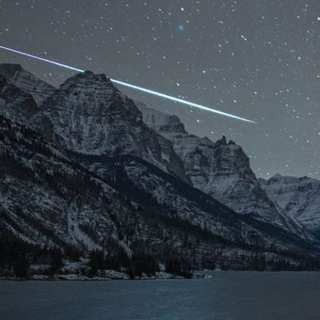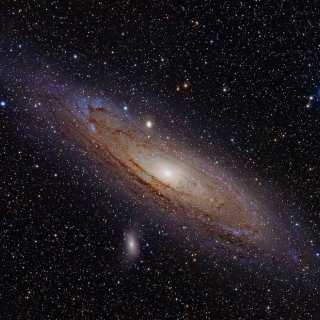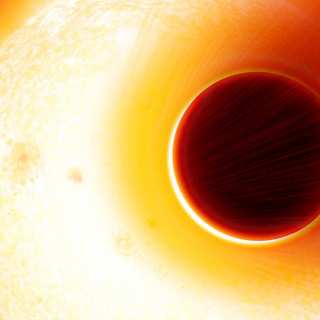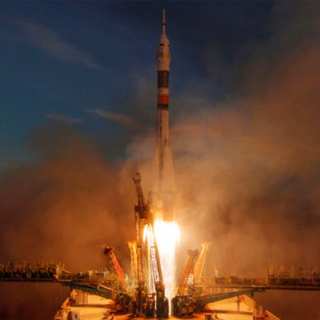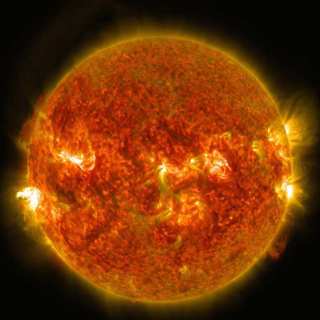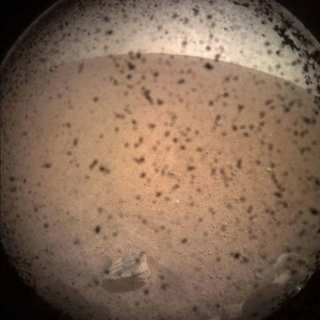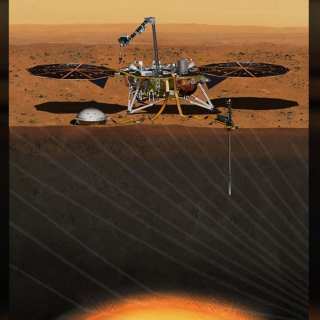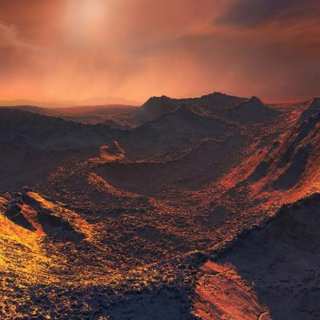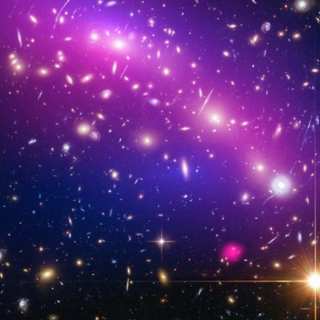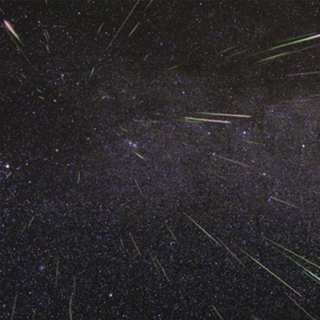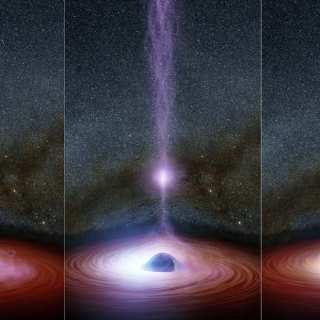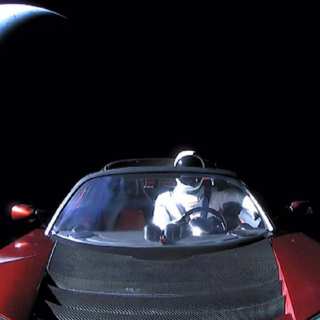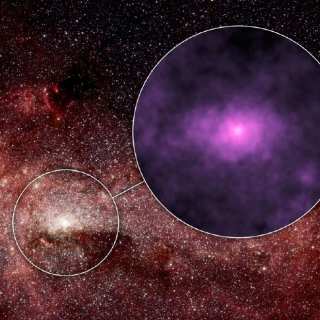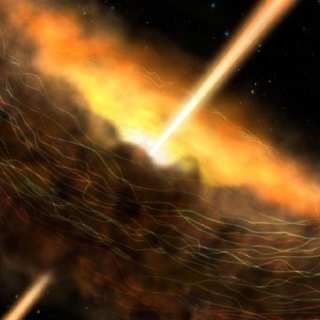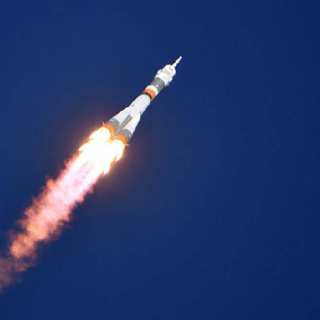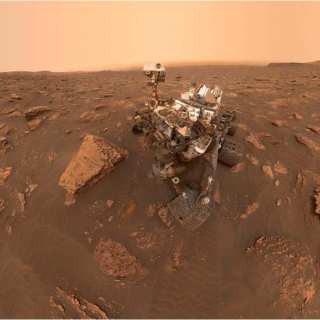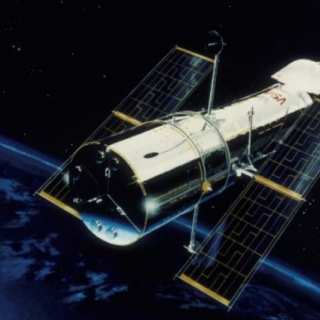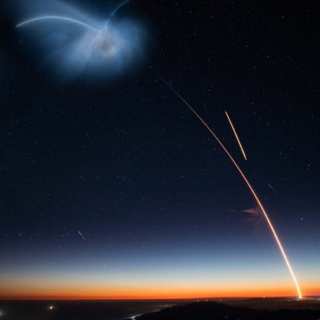Space
Peak of Geminid Meteor Shower: Watch the Spectacle Unfold in the Sky, Today & Tomorrow (Dec 13-14, 2018)
While August’s Perseid meteor shower was said to be the best of the year, the Geminid shower also promises to be a worthy spectacle - definitely, worth stepping out for, on a cold December night!
Dark Matter Isn’t Made From Black Holes, Says Research
One of the most interesting space studies, after the 2015-detection of gravitational waves from collisions with a black hole, was titled "Limits on Stellar-Mass Compact Objects as Dark Matter from Gravitational Lensing of Type Ia Supernovae," and it was published in the Physical Review Letters journal.
Tales of a Balloon Planet: Newly-Discovered Planet’s Atmosphere is ‘Inflated’ with Helium
Remember Cygnus, the galaxy active enough to clearly send signals from an engulfment event on the part of its central black hole to Earth recently? Well, it is back on the scientific stage this week, as researchers publish their findings on yet another highly unique body found in Cygnus.
Liftoff For Expedition 58: Soyuz Back In Business After Rocket Failure
NASA and Russian space agency officials are breathing easier following the successful launch of three astronauts on a Soyuz rocket from Kazakhstan. NASA's Anne McClain, Canada's David Saint-Jacques, and Russia's Oleg Kononenko blasted off from Baikonur at 17:31 local time (11:31 UTC, 6:31 EST), on December 3rd, 2018, kicking off a 6-hour, 4-orbit journey to the International Space Station.
The Very First Pictures Of Our Sun’s North Pole Has Been Revealed
Despite Ulysses’ insights, a focus on low solar latitudes has left the sun’s poles relatively unexplored. Certain scientists got creative in piecing together pictures of the sun’s polar regions. This image extrapolated low-latitude PROBA2 observations of the sun to reconstruct a view of the star’s pole.
Highlight Of The Week: NASA’s InSight Makes Flawless Landing On Mars
The Jet Propulsion Laboratory’s (JPL) mission support center was a hive of activity and nerves, a few days ago, as the InSight team monitored the fate of the craft this project had revolved around for years.
Cosmic ‘Cyber Monday’ – Will NASA’s InSight Successfully Land On Mars Today?
The InSight mission is a NASA project with the goal of setting a robotic spacecraft on the surface of Mars to collect in-depth, detailed data on the red planet. InSight will deploy a range of powerful, precise seismological instruments that may give a better idea of the makeup of Mars from core to surface. At least, that is the plan should the InSight robot touch down and land successfully. The event is scheduled for 26th November 2018, at 3 pm ET/12 pm PT.
New “Candidate Super-Earth” Planet Found Near Barnard’s Star
A new possible planet around Barnard’s star has been discovered - a cold super-Earth with a minimum mass of 3.2 times that of Earth, orbiting near its snow line (the minimum distance from the star at which volatile compounds could condense). Apart from the Alpha Centauri system, which consists of three stars and is around 4.3 light years away from us, Barnard’s star is the next nearest star at 6 light years away.
A Dark Matter “Hurricane” Is Blowing Past The Earth Right Now
A team of researchers from the University of Zaragoza, King's College London and the Institute of Astronomy in the UK, led by Ciaran O'Hare, found a collection of stars that were all moving in the same direction. They called this the S1 stream, and these stars are believed to be the remnants of a dwarf galaxy that was swallowed by the Milky Way, billions of years ago.
Asteroids Fly Close To The Earth In November 2018 – Anything To Worry About?
You may or may not have read the news about the asteroids that flew extremely close to the Earth over the last few days (November 9-10, 2018). These bodies were believed to be as big as houses, and therefore, there was a compelling reason to worry that they may encroach on our atmosphere or something similar. However, most of these scary super-close space missiles are not capable of harming us at all.
Scientists Confirm Presence Of ‘Super’ Black Hole At Milky Way’s Center
For a long time it was suspected, but now there is solid evidence, via a set of images, that the supermassive black hole (SMBH) — dubbed Sagittarius A* and pronounced A star — is present in our galaxy's midst. Previous research calculated that this ‘monster’ black hole could be about 4 million times the mass of the Earth’s sun and located about 25,000 light-years away from our planet.
Drifting ‘Starman’: Tesla’s Space Roadster Reported To Have Passed Mars
Remember when Tesla blasted one of its cars into space? SpaceX, which, like Tesla, is owned by billionaire entrepreneur Elon Musk, performed this stunt in February 2018. This was done to raise awareness of the company’s plans for crewed missions to destinations like Mars. Also, there was room in the payload of an unmanned launch that was scheduled for February 6, 2018.
NASA Calls Time On Two Legendary Probes: Kepler And Dawn Run Out Of Fuel
Recently, the National Aeronautical and Space Administration (NASA) had a bit of a mystery to solve. Its deep-space telescope, Kepler, had gone to sleep unexpectedly, and its operators could not get it to wake up or respond again. This unscheduled move by the craft was reported by NASA on October 19, 2018.
Scientists Are Still Perplexed By Source Of Mysterious Radio Waves From Space
Since 2007, scientists have detected 22 fast radio bursts (FRBs), a type of super-high-energy signal from space. The problem is that they have no idea what the signals are or from where they are originating. Now that more activity is being discovered from outer space, it has only deepened the mystery further.
Scientists Witness A Black Hole ‘Eat’ Matter For First Time
Over the years, numerous theories from the world of physics and astrophysics have informed the popular perception that black holes function to engulf the luckless particles that venture too close to them, out in space. Some of these theories suggest that this matter will never re-emerge from the dark body, and they have effectively been sucked out of existence. Other hypotheses, however, indicate that certain particles may contribute to the ‘jets’ that black holes appear to spew out from time to time. These jets deliver huge bursts of radiation such as X-rays.
Why Stephen Hawking’s Final Work Is Important
In 1967, Professor Wheeler introduced the term "black hole" to the world. They are believed to be massive bodies (regions or stars), small in size and a powerful gravitational field from which even light cannot escape.
Soyuz MS-10 Abort Launch To ISS: Crew Safe After Ballistic Landing
A US astronaut and a Russian cosmonaut were forced to make an emergency landing after their Russian Soyuz rocket malfunctioned on the way to the International Space Station (ISS).
SOS: Curiosity Rover on Mars Needs Tech Support
Curiosity is a set of scientific instruments mounted on a robot much like a car. It is currently located in the Gale crater on the surface of Mars. Curiosity has been on the red planet for seven years now, looking for signs of life or the potential for it. This mission has not always gone smoothly for NASA, who sent Curiosity to the crater in 2011. It has faced some technical issues and has not been able to send vital data back to the space science organization.
The Hubble Telescope Is Facing Gyroscope Failure But It Can Be Fixed, Says NASA
Last week, the Hubble telescope stood down from observing and put itself into “safe mode” after one of its gyroscopes, which keeps it aimed at objects of scientific interest in space, died.
SpaceX’s Falcon 9 Makes Beautiful History: Launched & Landed in California For First Time
On Sunday, October 7th, at 7:21 p.m. PDT, SpaceX successfully launched the SAOCOM 1A satellite from Space Launch Complex 4E (SLC-4E) at Vandenberg Air Force Base in California. The satellite was deployed about 12 minutes after liftoff.

